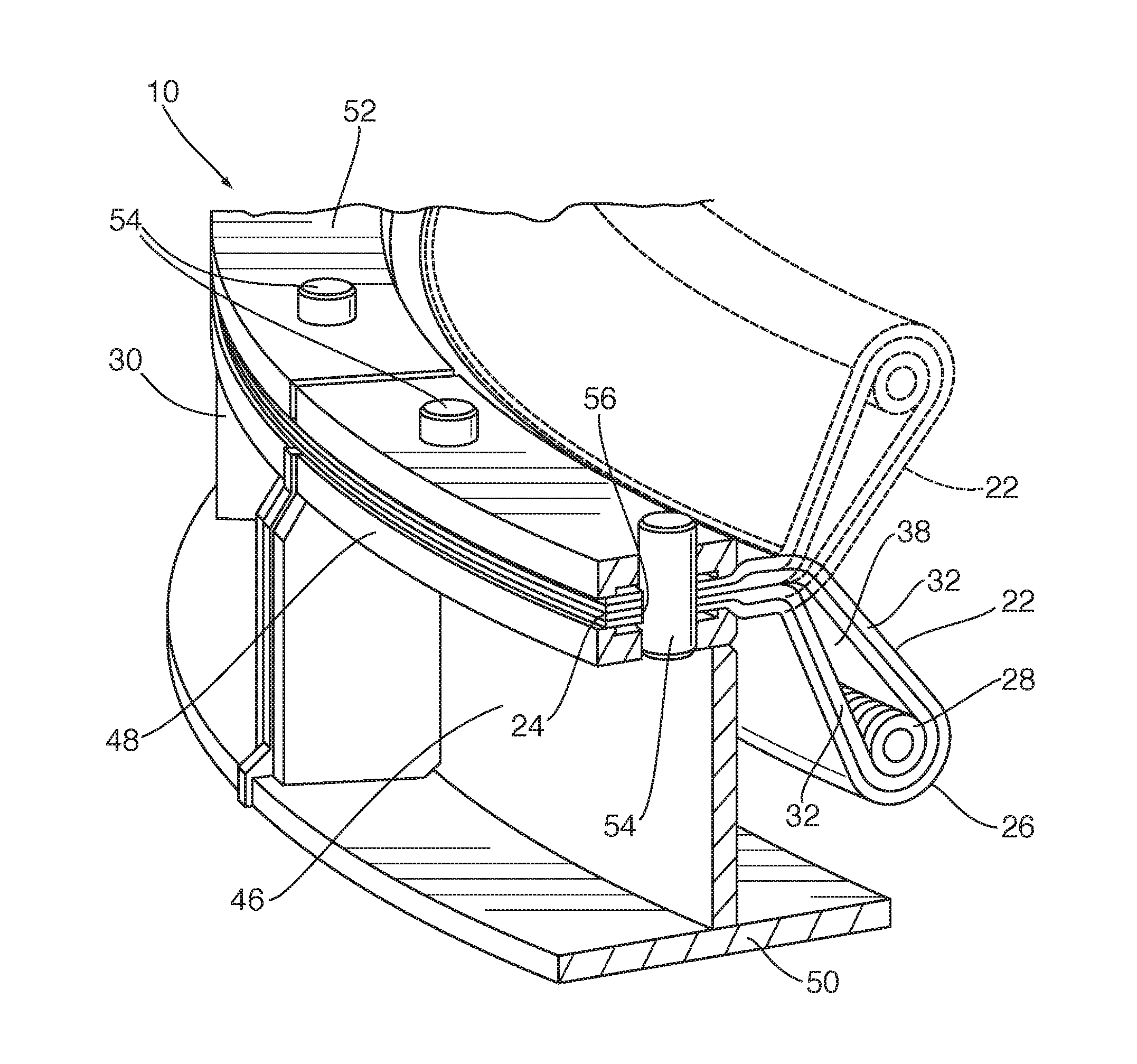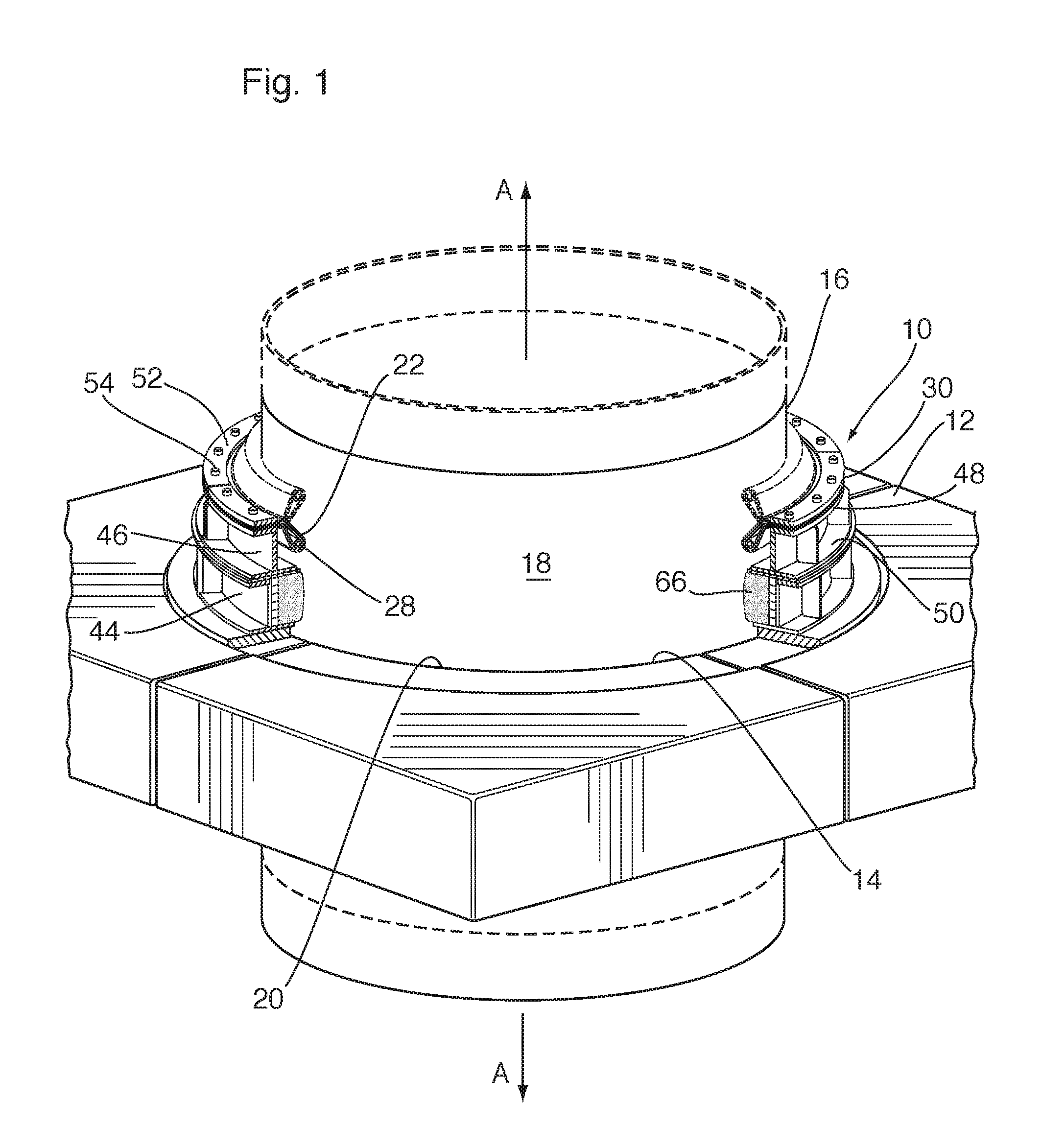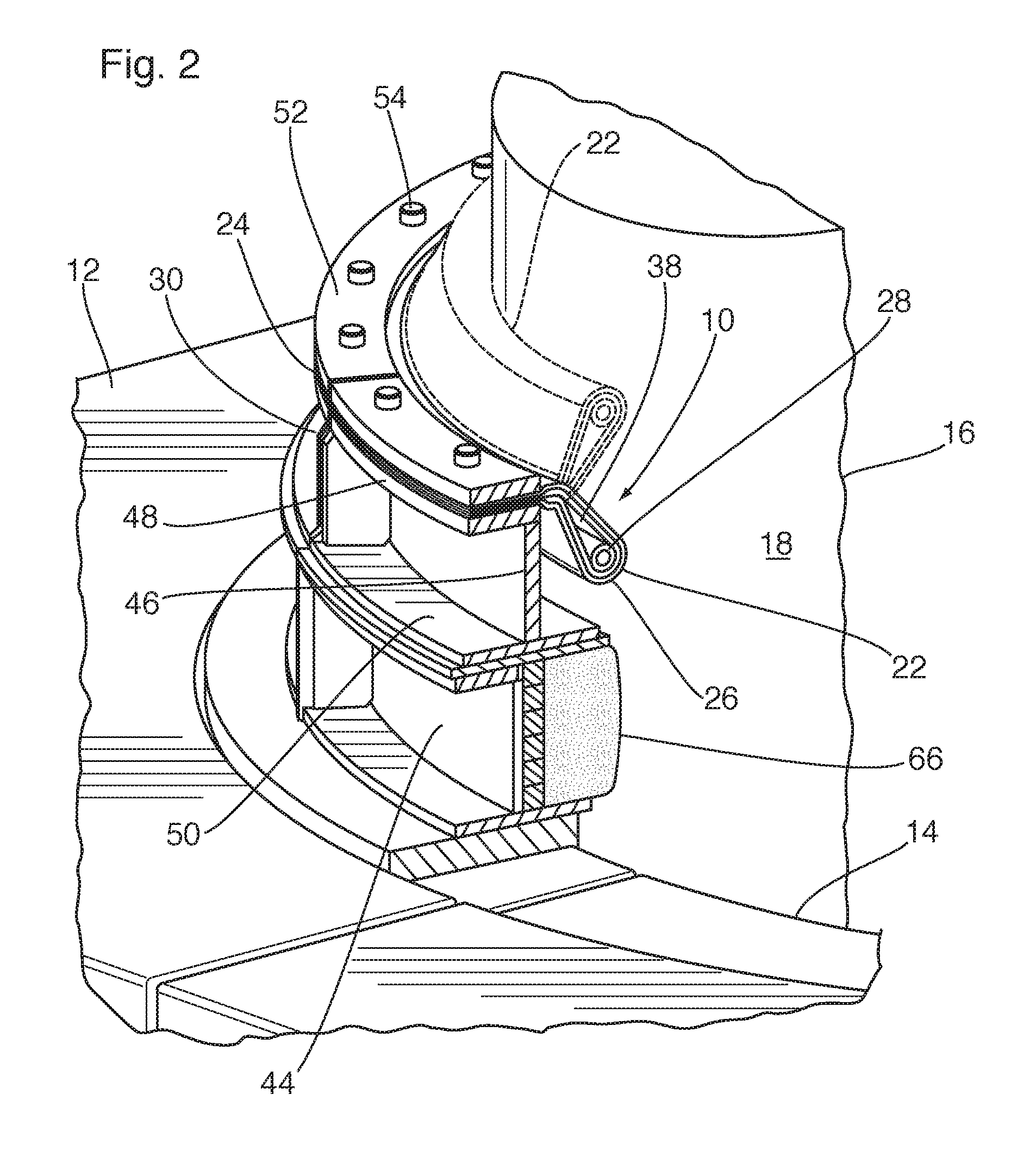Sleeve seal for electric furnace electrodes
a technology of electrode seals and sleeves, applied in the field of electrode seals, can solve the problems of inability to meet the specific application of elastomeric materials, the mechanism of utilizing a garter spring as a compression mechanism is limited, and the electrode seal may wear quickly, so as to achieve the effect of reducing compressive forces, high flexibility, and flexible seals
- Summary
- Abstract
- Description
- Claims
- Application Information
AI Technical Summary
Benefits of technology
Problems solved by technology
Method used
Image
Examples
Embodiment Construction
[0037]In the following description, specific details are set out to provide examples of the claimed subject matter. However, the embodiments described below are not intended to define or limit the claimed subject matter. It will be apparent to those skilled in the art that many variations of the specific embodiments may be possible within the scope of the claimed subject matter.
[0038]The first embodiment described below relates to a seal for sealing an electrode port in the roof of an electric furnace, through which a vertically-oriented electrode extends. However, it will be appreciated that the seal described below may be adapted for use in other fields where a seal is required against a highly variable cylindrical surface, and where there is relative movement between the seal and the cylindrical surface. It will also be appreciated that the surface is not necessarily cylindrical, nor does it need to be vertical. Rather, the seal described below can be used for devices having vari...
PUM
 Login to View More
Login to View More Abstract
Description
Claims
Application Information
 Login to View More
Login to View More - R&D
- Intellectual Property
- Life Sciences
- Materials
- Tech Scout
- Unparalleled Data Quality
- Higher Quality Content
- 60% Fewer Hallucinations
Browse by: Latest US Patents, China's latest patents, Technical Efficacy Thesaurus, Application Domain, Technology Topic, Popular Technical Reports.
© 2025 PatSnap. All rights reserved.Legal|Privacy policy|Modern Slavery Act Transparency Statement|Sitemap|About US| Contact US: help@patsnap.com



